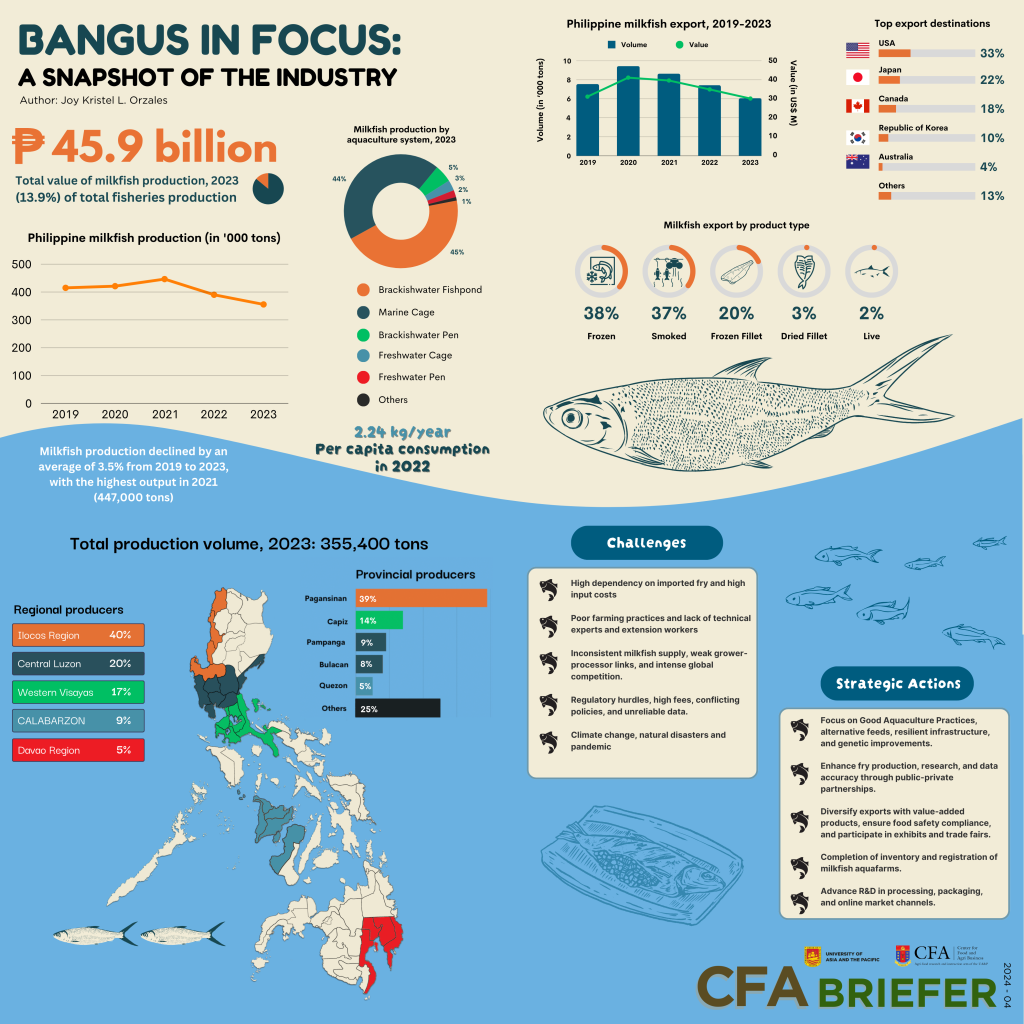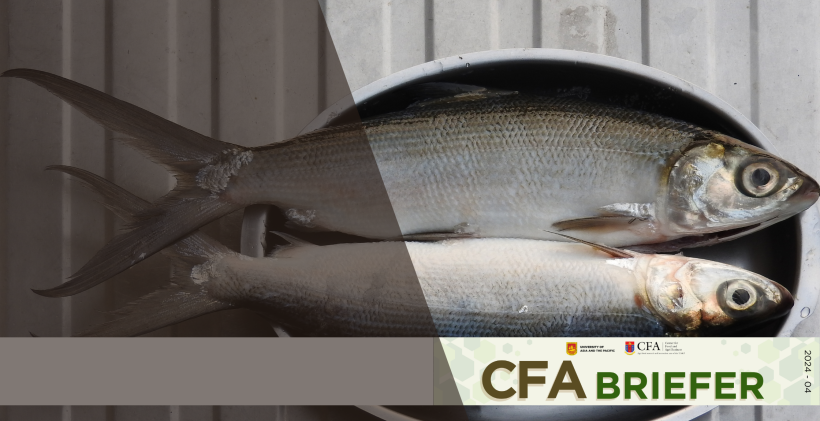This insightful piece provides a comprehensive exploration of the Philippine milkfish industry, offering a detailed examination of its current state, including production and trade aspects. It highlights the key challenges faced by the sector and outlines strategic actions and innovative approaches designed to overcome these obstacles, ensuring sustainable growth and long-term competitiveness for the industry.
By JOY KRISTEL ORZALES
Agribusiness Specialist, Center for Food and Agri Business, UA&P
BANGUS (MILKFISH) has long been a staple in Filipino diets, valued for its mild flavor, excellent nutritional value, and cultural significance. It is the top fish commodity produced in the country. In 2023, value of production amounted to PhP45.9 billion, equivalent to 13.9 percent of the total fisheries production and about two percent of the total agriculture and fisheries output.
The milkfish sector is critical to providing food security, creating jobs, and promoting economic progress, especially in coastal and rural areas.
PRODUCTION
In 2023, production of milkfish reached 355,400 tons, down by an average of 3.5 percent from 414,900 tons in 2019. Milkfish accounted for 8.3 percent of the total volume of fisheries production during the year. During the last five years, its average share was 9.4 percent of the total fisheries production.
The highest harvest during the 5-year period was in 2021 when it reached 447,00 tons. The strong showing, not only in terms of marketable size but also in the number of fry for aquaculture, was partly due to the efforts of the Bureau of Fisheries and Aquatic Resources (BFAR) anchored on the principle of sustainable production. These efforts include active participation of stakeholders, increased efficiency and production capacity of government hatcheries and programs such as Satellite Community-Based Larval Rearing Facilities established through the Bangus Fry Sufficiency Program.
Output, however, dropped by 12.6 percent in 2022 to 390,100 tons with 12 regions registering lower production. The decline was attributed to the insufficiency of fingerling supply and low-quality feeds (Rivera, 2022), which continues up to now. In addition, the fisheries sector was severely affected by Typhoon Odette that hit the country during the latter part of 2021, which had spillover effects during the early part of 2022.

Do you want to read the full article? Please answer this form and we will send the article to your email address.

